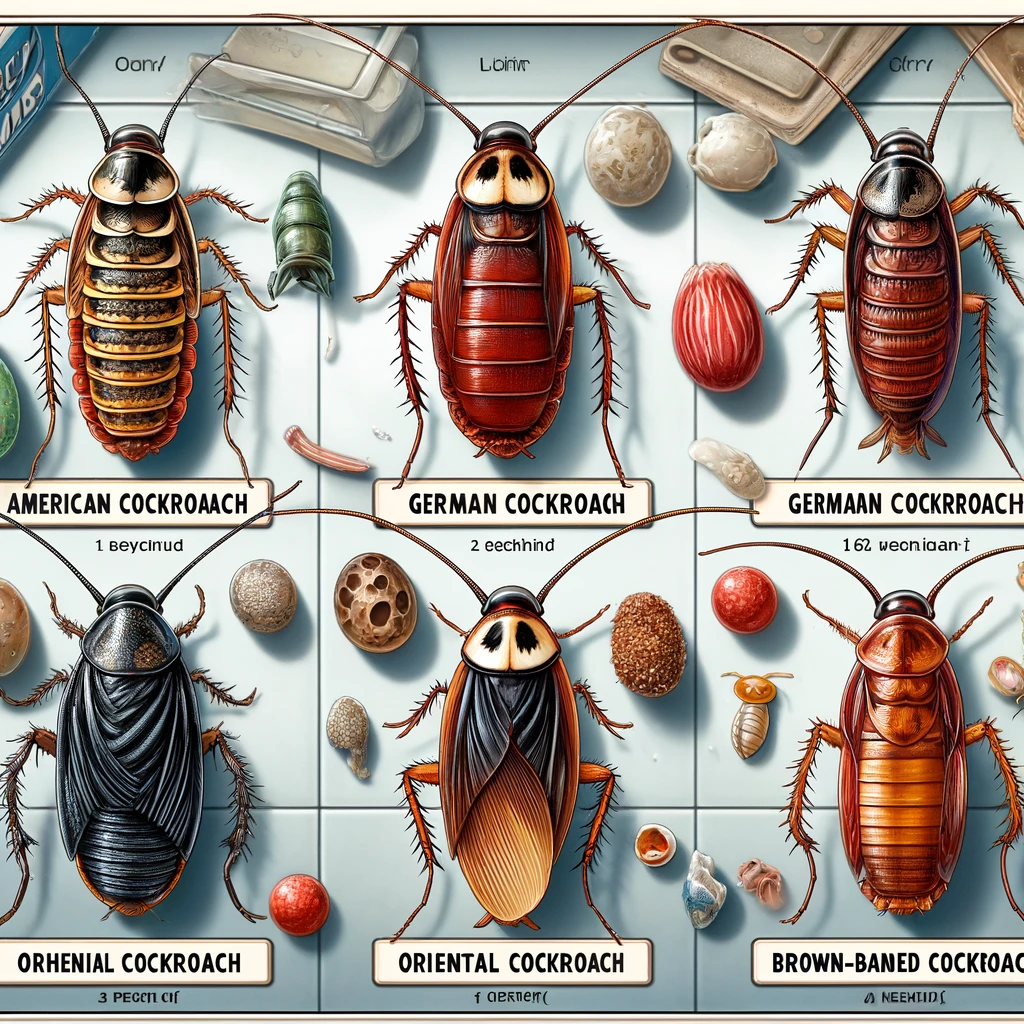Comparing Cockroach Eggs Size for Different Types of Cockroaches
 Cockroach infestations can escalate quickly due to their rapid reproduction. Understanding the size and appearance of cockroach eggs is crucial for early detection and effective pest control. In this article, we’ll explore the different sizes of cockroach eggs, how to identify them, and what steps you can take to prevent and control infestations.
Cockroach infestations can escalate quickly due to their rapid reproduction. Understanding the size and appearance of cockroach eggs is crucial for early detection and effective pest control. In this article, we’ll explore the different sizes of cockroach eggs, how to identify them, and what steps you can take to prevent and control infestations.
Understanding Cockroach Eggs
Egg Cases (Oothecae)
Cockroach eggs are typically encased in a protective shell called an ootheca. Each ootheca contains multiple eggs, which can vary in number depending on the species of cockroach. The ootheca provides protection and a safe environment for the developing eggs.
Sizes of Cockroach Eggs
American Cockroach (Periplaneta americana)
- Ootheca Size: Approximately 8-10 mm long.
- Number of Eggs: Each ootheca contains about 14-16 eggs.
- Appearance: Reddish-brown and ridged.
German Cockroach (Blattella germanica)
- Ootheca Size: Approximately 6-9 mm long.
- Number of Eggs: Each ootheca contains about 30-40 eggs.
- Appearance: Light brown and smooth.
Oriental Cockroach (Blatta orientalis)
- Ootheca Size: Approximately 8-10 mm long.
- Number of Eggs: Each ootheca contains about 16-18 eggs.
- Appearance: Dark brown to black and ridged.
Brown-banded Cockroach (Supella longipalpa)
- Ootheca Size: Approximately 5 mm long.
- Number of Eggs: Each ootheca contains about 10-18 eggs.
- Appearance: Light brown with distinctive horizontal bands.
Identifying Cockroach Eggs
Visual Identification
- Color and Texture: Cockroach oothecae vary in color and texture, ranging from smooth and light brown to ridged and dark brown.
- Size and Shape: The size and shape of the ootheca can help identify the species. Measure the length and look for specific characteristics like ridges or bands.
Common Locations
Cockroaches tend to lay their eggs in hidden, undisturbed areas. Common places to find cockroach eggs include:
- Kitchens: Under sinks, behind appliances, and inside cabinets.
- Bathrooms: Around plumbing fixtures and in cabinets.
- Basements and Crawl Spaces: In dark, damp areas.
Preventing and Controlling Cockroach Infestations
Sanitation
- Keep Your Home Clean: Regularly clean kitchens and bathrooms to remove food sources and reduce hiding spots.
- Proper Food Storage: Store food in airtight containers and promptly dispose of garbage.
Eliminate Hiding Spots
- Seal Cracks and Gaps: Use caulk or other sealants to close off entry points and hiding spots.
- Reduce Clutter: Remove unnecessary items that can serve as hiding spots for cockroaches.
Moisture Control
- Fix Leaks: Repair any leaky faucets or pipes to reduce moisture levels.
- Use Dehumidifiers: In damp areas, use dehumidifiers to lower humidity levels.
Using Baits and Insecticides
- Baits: Place cockroach baits in areas where you have identified cockroach activity. Baits are effective because they attract and poison the bugs.
- Insecticides: Use insecticides in targeted areas to reduce the cockroach population.
Professional Pest Control
For severe infestations, consider hiring a professional pest control service. Professionals can provide comprehensive inspections and targeted treatments to effectively manage and eliminate cockroach populations.
Cockroach eggs are a key factor in the rapid spread of infestations. By understanding the size and appearance of these eggs, you can take early action to control and prevent cockroach problems in your home. Regular cleaning, moisture control, and sealing entry points are essential steps in maintaining a cockroach-free environment.
If you suspect a cockroach infestation in your home, take immediate steps to address it. Regular inspections, sanitation, and targeted pest control measures are crucial. For persistent infestations, contact a professional pest control service for expert assistance.
- The Life Span of a Cockroach
- Do Cockroaches Eat Clothes?
- Do Cockroaches Have Teeth?
- Shrimps and Cockroaches
- Will Sleeping with the Light On Keep Cockroaches Away?
- How to get roaches out of your car overnight
- Do Cockroaches Feel Pain?
- How Many Legs Do Cockroaches Have?
- Comparing Cockroach Eggs Size for Different Types of Cockroaches
- Identifying a Cockroach Bite on the Lips or Face
- Black Water Bug Identification and Control
- Why Do Water Bugs Come Out At Night?
- What Does Roach Rash Look Like?
- Can Cockroaches Bite Your Eyelid?
- Can Cockroaches Live in Your Balls?
- How did cockroaches get their name?
- Why Do Cockroaches Shed Their Skin?
- What Smell do Palmetto Bugs Hate?
- Baby Palmetto Bug: Identification and Control
- Cockroach Eggs vs Poop: How to Tell the Difference
- How to Get Rid of Water Bugs
- How Long Can a Cockroach Live Without Air?
- The Lifecycle of the German Cockroach: From Egg to Adult
- Do Mice Eat Roaches
- Wood Roach vs. Cockroach

